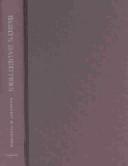| Listing 1 - 2 of 2 |
Sort by
|

ISBN: 0472113232 9780472113231 Year: 2003 Publisher: Ann Arbor (Mich.) : University of Michigan press,
Abstract | Keywords | Export | Availability | Bookmark
 Loading...
Loading...Choose an application
- Reference Manager
- EndNote
- RefWorks (Direct export to RefWorks)
The material properties of late medieval manuscripts testify to the power of visual images to shape both the reading experience and the reader. Early fifteenth century Paris saw a proliferation of luxury manuscripts whose luminous illustrations situate the reader as spectator, and Christine de Pizan's Epistre Othea exemplifies the power of visual representation to shape the medieval reading experience. According to the rhetoric of the Othea, the body, character, and soul of the reader are formed as a result of simultaneously viewing the images and reading the text. In Myth, Montage, and Visuality in Late Medieval Manuscript Culture Marilynn Desmond and Pamela Sheingorn analyze the ways in which Othea manuscripts display classical myths for late medieval humanist, chivalric, and Christian readers. Desmond and Sheingorn's innovative study draws extensively on film theory and its notions of spectatorship to explore the ethical implications of viewing illustrated manuscripts for the medieval reader. Focusing particularly on the twin manuscripts of the Othea in the Duke's manuscript and the Queen's manuscript, the authors suggest that pre-modern and post-modern cultures share a predilection for the cinematic arrangement of knowledge in a montage format in which meaning derives from unexpected juxtapositions. Desmond and Sheingorn's interdisciplinary endeavor sheds new light on the study of medieval women writers, the medieval reception of classical myth, manuscript studies and codicology, gender and sexuality, and theoretical approaches to visual cultures, particularly the value of film theory for the study of pre-modern cultures.
Manuscripts. Epigraphy. Paleography --- Christine de Pizan --- Christine, --- 091 CHRISTINE DE PISAN --- 091.31 <44> --- 091.31:7.04 --- Handschriftenkunde. Handschriftencatalogi--CHRISTINE DE PISAN --- Verluchte handschriften--Frankrijk --- Verluchte handschriften: iconografie --- Christine de Pisan --- 091.31:7.04 Verluchte handschriften: iconografie --- 091.31 <44> Verluchte handschriften--Frankrijk --- 091 CHRISTINE DE PISAN Handschriftenkunde. Handschriftencatalogi--CHRISTINE DE PISAN --- De Pizan, Christine --- de Pisan, Christine --- Christine, - de Pisan, - ca. 1364-ca. 1431. - Epitre d'Othea a Hector --- CHRISTINE DE PISAN, VERS 1363-1430 --- EPITRE D'OTHEA

ISBN: 0226243117 0226243125 9786611125592 1281125598 0226243184 9780226243184 9780226243115 9780226243122 9781281125590 Year: 2003 Publisher: Chicago : University of Chicago Press,
Abstract | Keywords | Export | Availability | Bookmark
 Loading...
Loading...Choose an application
- Reference Manager
- EndNote
- RefWorks (Direct export to RefWorks)
Winner of the 2004 Book Award from the Society for the Study of Early Modern Women and the 2003 Roland H. Bainton Prize for Literature from the Sixteenth Century Society and Conference. Our common definition of literacy is the ability to read and write in one language. But as Margaret Ferguson reveals in Dido's Daughters, this description is inadequate, because it fails to help us understand heated conflicts over literacy during the emergence of print culture. The fifteenth through seventeenth centuries, she shows, were a contentious era of transition from Latin and other clerical modes of literacy toward more vernacular forms of speech and writing. Feguson's aim in this long-awaited work is twofold: to show that what counted as more valuable among these competing literacies had much to do with notions of gender, and to demonstrate how debates about female literacy were critical to the emergence of imperial nations. Looking at writers whom she dubs the figurative daughters of the mythological figure Dido-builder of an empire that threatened to rival Rome-Ferguson traces debates about literacy and empire in the works of Marguerite de Navarre, Christine de Pizan, Elizabeth Cary, and Aphra Behn, as well as male writers such as Shakespeare, Rabelais, and Wyatt. The result is a study that sheds new light on the crucial roles that gender and women played in the modernization of England and France.
European literature --- Women authors --- History and criticism --- Literature [Modern ] --- French literature --- English literature --- Women and literature --- England --- France --- Women --- Education --- Sociology of the family. Sociology of sexuality --- Comparative literature --- Literature: authors --- anno 1500-1799 --- Europe --- Literature, Modern --- Human females --- Wimmin --- Woman --- Womon --- Womyn --- Females --- Human beings --- Femininity --- Literature --- History and criticism. --- reading, academics, academia, learning, education, educational, academic, scholarly, research, women, womens issues, time period, era, english, britain, uk, united kingdom, french, europe, european, western world, 16th, century, language, reader, writing, writer, analysis, conflict, print, culture, cultural, 15th, 17th, latin, clerical, speech, literacies, christine de pizan, aphra behn.
| Listing 1 - 2 of 2 |
Sort by
|

 Search
Search Feedback
Feedback About UniCat
About UniCat  Help
Help News
News